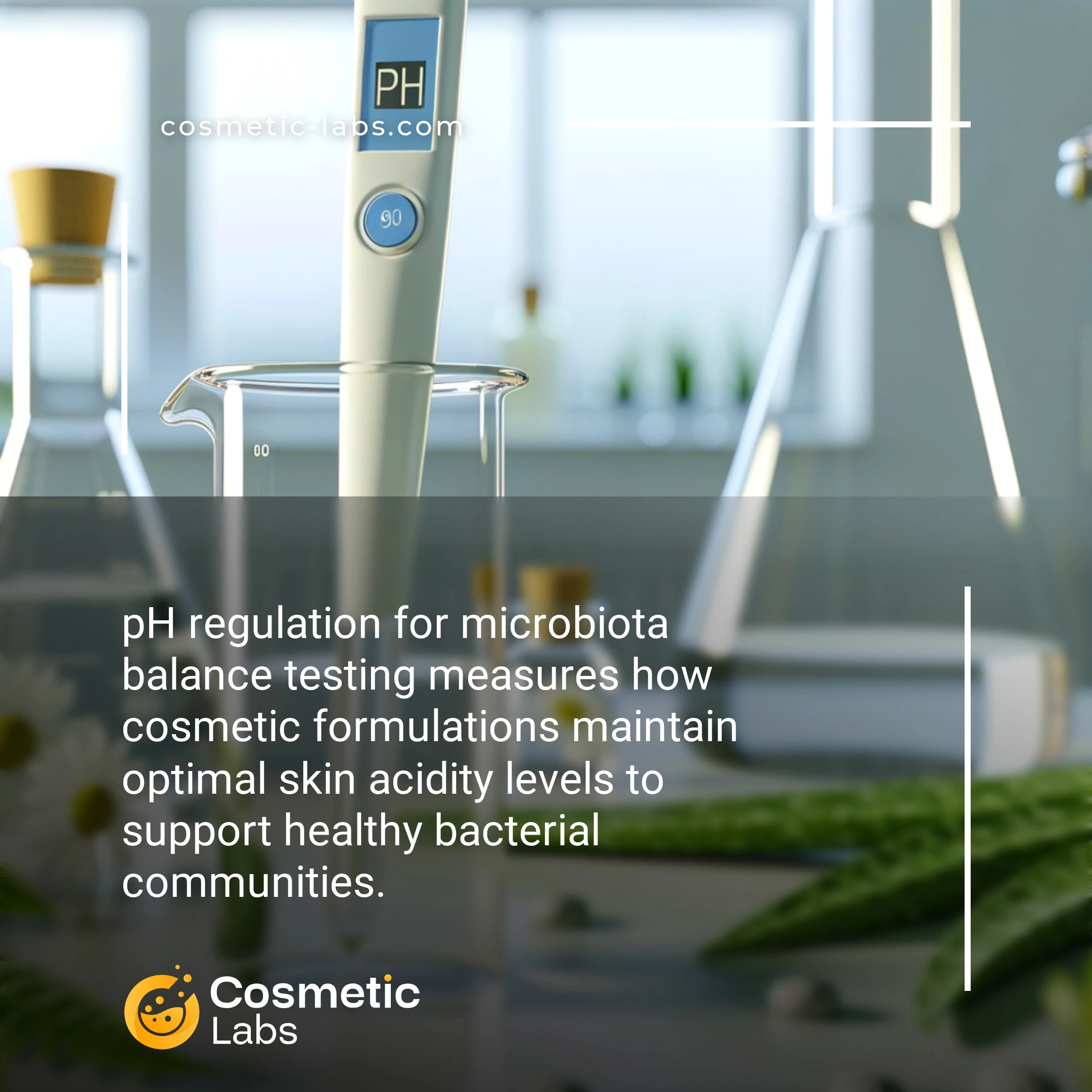pH Balance Testing Services for Skin Microbiome Products

What is pH regulation?
pH regulation for microbiota balance testing is a specialized service that measures how cosmetic formulations affect the skin’s acid mantle and bacterial ecosystem. Labs use controlled pH environments (typically 4.5-6.5) to evaluate whether your products maintain healthy microbiome diversity or disrupt beneficial bacteria like Staphylococcus epidermidis. This testing reveals if your formulation supports natural skin defense mechanisms, helping you create products that work with the skin’s biology rather than against it.
Why do you need this service?
Cosmetic labs use pH regulation testing for microbiome balance to validate probiotic skincare formulations and assess ingredient compatibility with skin’s natural bacterial ecosystem. This testing helps brands demonstrate that their products maintain optimal skin pH levels between 4.5-6.5, ensuring beneficial bacteria thrive while pathogenic strains remain controlled, delivering clinically-backed claims for microbiome-friendly products.
Who provides pH regulation services?
All cosmetic labs providing pH regulation services
There is no company providing these services at the moment.
pH Balance Testing for Skin Microbiome Health
Skin pH directly influences microbial communities, making pH regulation testing a critical component of microbiota balance studies. Labs on our platform measure how formulations affect skin acidity levels and their downstream effects on beneficial bacteria populations.
pH Measurement Protocols
Testing labs use calibrated pH meters and skin-compatible electrodes to track pH changes over time. They measure baseline skin pH, then monitor shifts after product application at 30-minute intervals for up to 8 hours.
Standard protocols include:
- Pre-treatment pH mapping across test sites
- Post-application monitoring at defined timepoints
- Correlation analysis with microbial population changes
- Buffer capacity testing for pH stability
Microbiota Response Analysis
Labs combine pH data with microbial sequencing to understand how acidity changes affect bacterial diversity. This dual approach reveals whether your product maintains the skin’s natural acid mantle while supporting healthy microbiome balance.
Testing services typically examine:
- Commensal bacteria survival rates at different pH levels
- Pathogenic organism growth inhibition
- Recovery time for natural pH restoration
Connect with specialized labs through our platform to validate your product’s pH impact on skin microbiota health.
Applications of pH Regulation for Microbiota Balance Testing
Cosmetic brands rely on pH regulation for microbiota balance testing to validate product safety and efficacy before market launch.
Prebiotic Skincare Product Development
Labs test prebiotic formulations using controlled pH environments to measure bacterial growth patterns and diversity indices. Testing protocols examine how pH adjustments between 4.5-6.5 affect beneficial bacteria like Staphylococcus epidermidis and Propionibacterium acnes populations.
Product developers use these results to optimize formulation pH levels that promote healthy skin flora while inhibiting pathogenic microorganisms. Testing typically spans 7-14 days with bacterial count measurements every 24 hours.
| pH Range | Beneficial Bacteria Response | Pathogen Inhibition | Recommended Use |
|---|---|---|---|
| 4.5-5.0 | Moderate growth | High inhibition | Acne-prone skin products |
| 5.0-5.5 | Optimal growth | Moderate inhibition | General skincare formulations |
| 5.5-6.0 | Good growth | Low inhibition | Sensitive skin products |
Antimicrobial Product Validation
Testing services evaluate how antimicrobial ingredients perform across different pH conditions to ensure product effectiveness. Labs measure minimum inhibitory concentrations (MIC) and bacterial reduction rates at various pH levels using standardized protocols.
Brands use this data to determine optimal pH ranges that maximize antimicrobial efficacy without disrupting beneficial skin microbiota. Results guide preservative selection and concentration levels for balanced microbiome preservation in final formulations.
Ready to validate your product’s microbiota balance? Contact specialized cosmetic labs on our platform for comprehensive pH regulation testing services.
